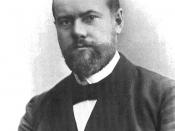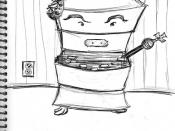1. Introduction
A bureaucracy is a large organization that is designed to achieve a common goal through a hierarchical organization. The classic perspective on bureaucracy was proposed by German sociologist, Max Weber at the beginning of 20th century. Weber developed a theory of authority structures and described organizational activity based on authority relations. He described an ideal type of organization that he called a "bureaucracy".
The characteristics of Weber's bureaucracy
* Division of labor - Each person's job is broken down into simple, routine and well defined tasks.
* Well-defined authority hierarchy - A multilevel formal structure, with a hierarchy of positions or offices, ensures that each lower office is under the supervision and control of a higher one.
* High formalization - Dependence on formal rules and procedures to ensure uniformity and to regulate the behavior of job holders.
* Impersonal nature - Rules and controls are applied uniformly avoiding involvement with personalities and personal preferences of employees.
* Employment decisions based on merit - Selection and promotion decisions are based on technical qualifications, competence and performance of the candidates.
* Career tracks for employees - Managers are professional officials rather than owners of the units they manage. They work for fixed salaries and pursue their careers within organization.
* Distinct separation of members' organizational and personal lives - The demands and interests of personal affairs are kept completely separate to prevent them form interfering with rational impersonal conduct of the organization's activities.
Bureaucracy, as described by Weber, emphasize rationality, predictability, impersonality, technical competence, and authoritarianism. The central theme in Weber's bureaucratic model is standardized structure and processes.
2. Advantages of Bureaucracy
Weber sincerely believed that his model could remove the ambiguity, inefficiencies, and patronage that characterized most organizations at that time. This model became the design prototype for...



Good essay
Well explained the issues of bureaucracy.
0 out of 2 people found this comment useful.